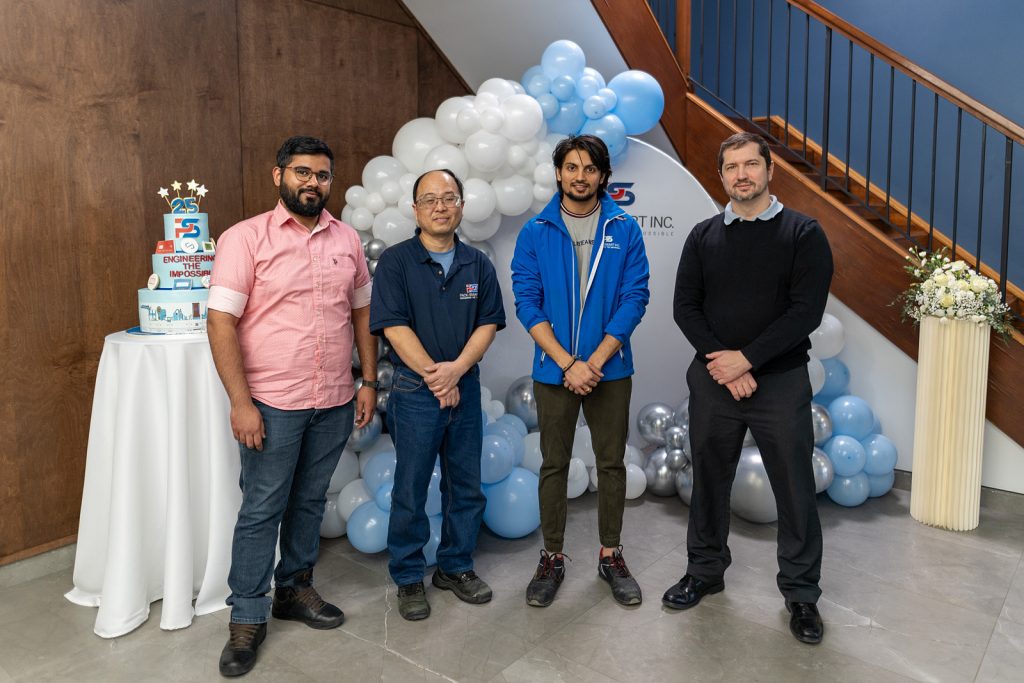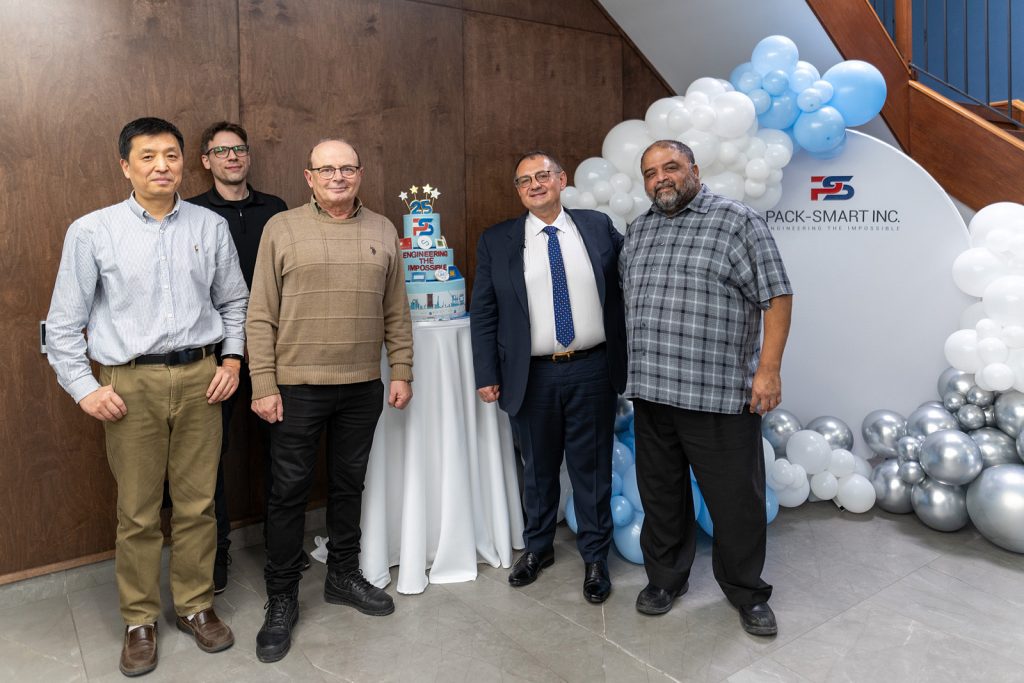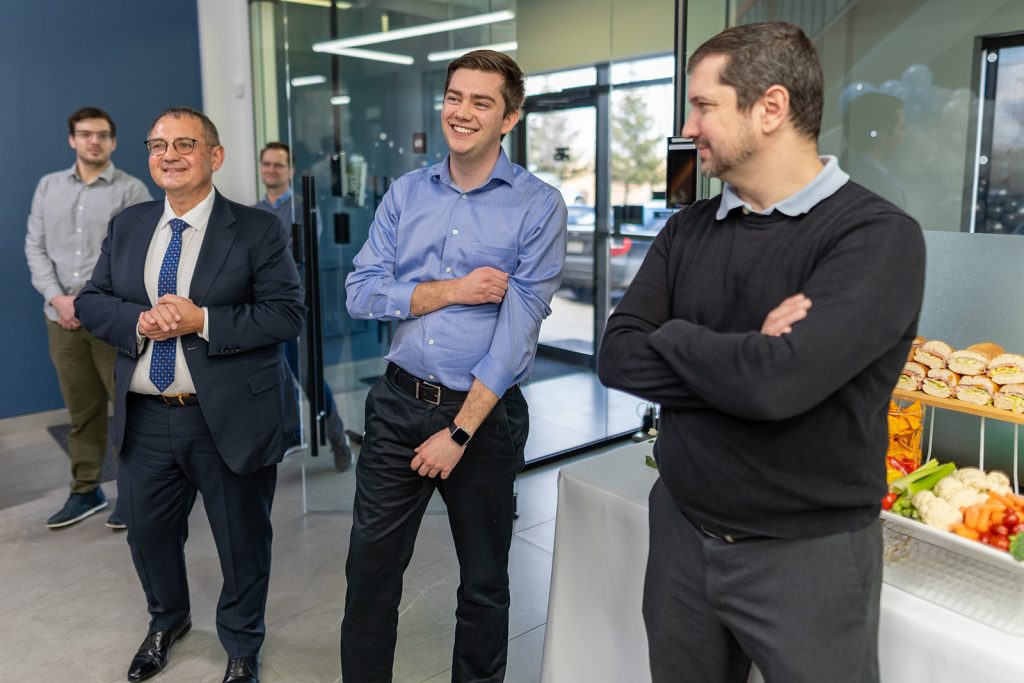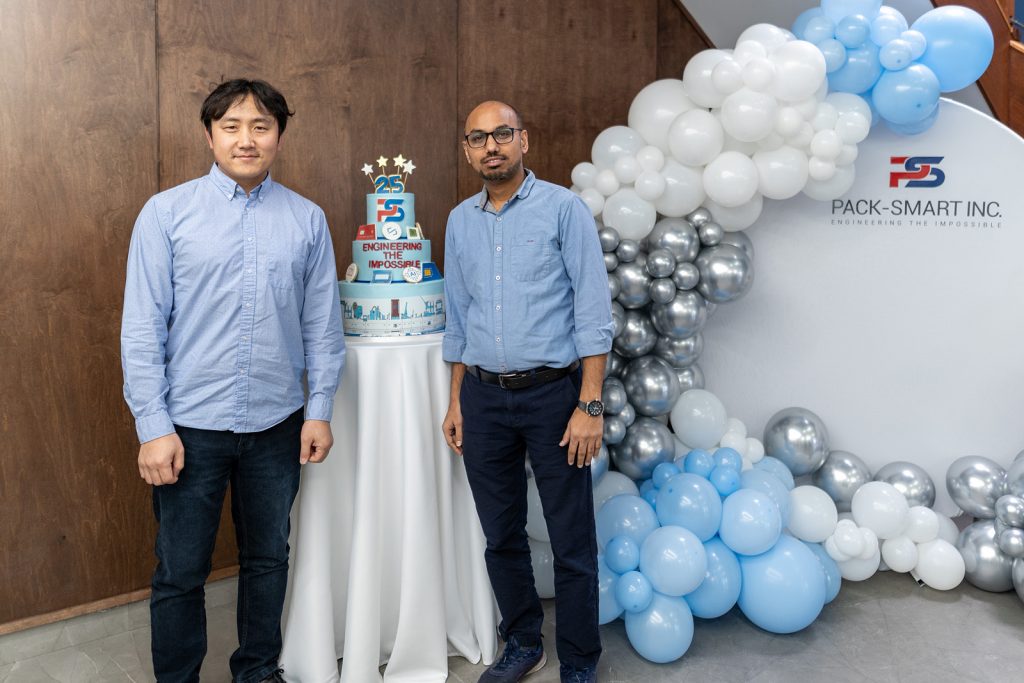We are delighted to celebrate a significant milestone in our journey: Pack-Smart’s 25th anniversary. As a North American business driven by innovation and performance, we combine technology and people to engineer and support some of the most complex solutions that improve efficiencies and create new products for companies ranging from small enterprises to multinational brands and businesses worldwide.
Pack-Smart’s modular systems combined with the Delta-X Suite are a revolution for assembly finishing and packaging automation, uniquely designed for your individual needs.
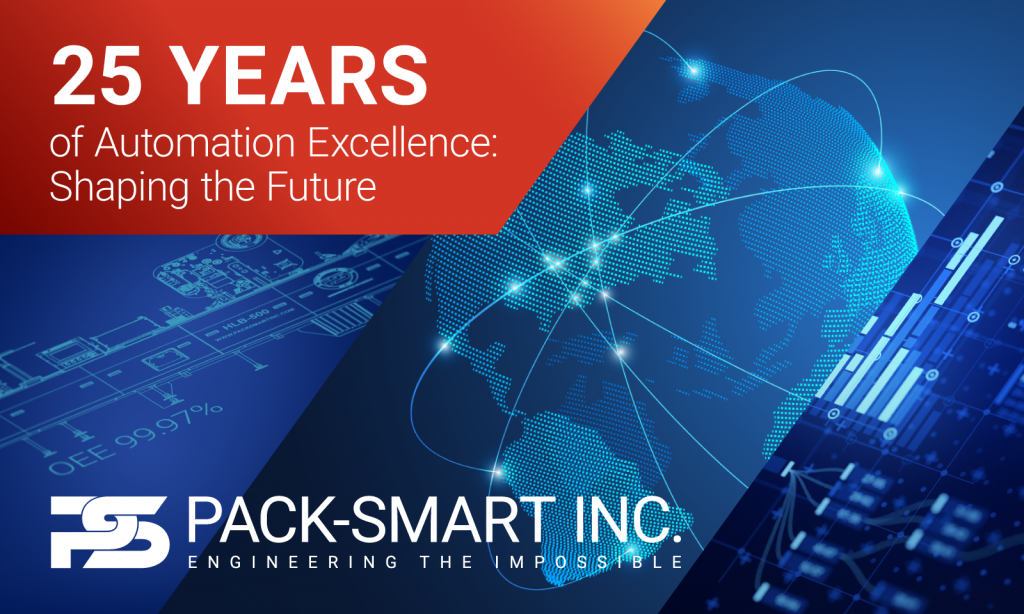
Milestone Achievements
Our success is rooted in our ability to develop cutting-edge hardware and software technologies that address complex engineering, manufacturing, and distribution challenges while achieving the highest speeds, accuracy, and World-Class OEE. Over the past two decades, Pack-Smart has completed over 1900 installations in 27 countries worldwide, serving brand owners and industry leaders across the Pharmaceutical, Personal Care, Telecommunications, Payments, E-Commerce, and FMCG markets.
We have achieved significant milestones throughout our journey, highlighting our commitment to innovation and excellence. From pioneering print and packaging solutions to expanding our global presence, Pack-Smart has been at the forefront of revolutionizing the industry. Our key advantage lies in our relentless pursuit of technological innovation and the expertise of our team, which combines mechanical engineering, machine learning, machine vision, robotics, AI, and motion controls to automatically customize solutions and accommodate variations in materials and products.
As we celebrate Pack-Smart’s 25th anniversary, we reflect on our achievements with deep gratitude to our steadfast customers, partners, and stakeholders who have supported us throughout this remarkable journey. Our customers are the focal point of our endeavours, and we have deeply valued their trust and confidence in us over the years.
Customer-Centric Commitment
At Pack-Smart Inc., our customers are at the heart of everything we do. We approach every order of business as a project that receives undivided attention and a personalized experience. We sincerely appreciate the trust and confidence placed in us by brand owners and industry leaders across the Pharmaceutical, Personal Care, Telecommunications, Payments, E-Commerce, and FMCG markets. Our commitment to delivering exceptional value and service is unwavering.
We continuously innovate and adapt to evolving customer requirements by leveraging cutting-edge technologies. Our support tools enable us to assist customers remotely, reducing downtime and increasing efficiency. Additionally, our implementation of Next Generation IoT technology enhances machine uptime, ensuring seamless operations and minimizing disruptions. These advancements complement our commitment to offering custom packaging and print solutions, along with advanced automation capabilities, all aimed at exceeding customer expectations and delivering unparalleled value.
Looking Ahead
We are invigorated by the prospects that lie before us. We pledge to build upon our legacy of innovation, collaboration, and customer-centricity as we embark on the next chapter of our journey. We are committed to creating, investing in, and utilizing modern technologies to manage information more effectively and strengthen our relationships with global partners. Additionally, we focus on enhancing our supply chain to ensure that spare parts and support are readily available, regardless of the solution’s location.
Thank You
On behalf of the Pack-Smart Inc. team, we extend our sincerest gratitude to our customers, partners, and stakeholders for your unwavering support and trust over the past quarter-century. Your loyalty and collaboration have been instrumental to our success, and we are genuinely honoured to be your preferred automation ally.
As we celebrate this remarkable milestone, we reaffirm our commitment to delivering innovative solutions, unparalleled service, and enduring value to all. Here’s to the next 25 years of collaboration, expansion, and mutual triumph!
Thank you for being an integral part of our journey.
Contact us today and discuss your projects. Our Pack-Smart team is ready to help!






